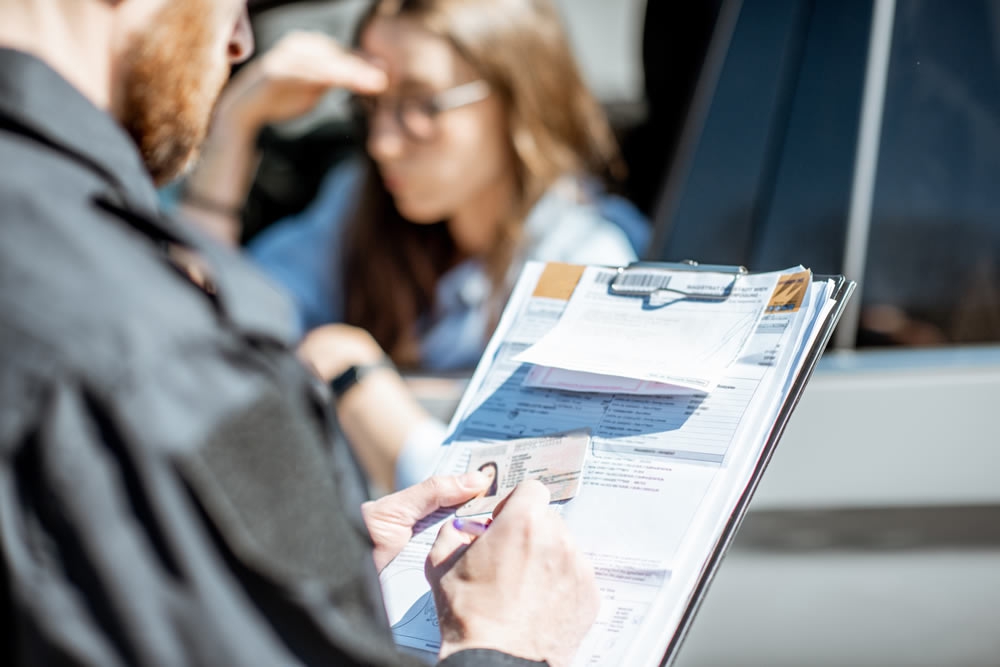
New Driving License in NYC (23)
Quick Driving Tips for NYC

Avoiding traffic in New York City can be a challenging task, but with careful planning, a few key strategies, and some quick driving tips, you can significantly improve your experience navigating the city.
How To Reduce Your Points & Auto Insurance Rate
PIRP is also known as the Defensive Driving Course or Motor Vehicle Accident Prevention Course. It is a comprehensive driver safety course which provides knowledge and techniques for safe and lawful driving.
Tickets in New York City
DMV’s Traffic Violations Bureau (TVB) processes tickets for non-criminal moving traffic violations issued in the five boroughs of New York City.
Driving in New York City
Navigating the roads in New York City (NYC) can be a unique experience, as the city has its own set of traffic rules and challenges.
New York Driver Point System
The New York State Driver Point System is a program implemented by the New York Department of Motor Vehicles (DMV) to monitor and track the driving records of licensed drivers in the state.
Texting and Driving in New York State
Texting and driving is a dangerous activity that can lead to accidents and loss of lives. In an effort to prevent such incidents, many states, including New York, have enacted laws to regulate and penalize this behavior. Here's everything you need to know about New York's texting and driving laws:
Get a REAL ID or Enhanced ID
A REAL ID is a special type of driver's license or identification card issued by the DMV that meets federal requirements. Starting in May 2025, you will need a REAL ID to board domestic flights within the U.S. or enter certain federal buildings, unless you have a valid passport.
Choose the Best Driving School in NYC for 2023
Learning to drive is a crucial skill that many people need to acquire at some point in their lives. If you live in New York City, it's important to choose the right driving school to ensure that you receive the best instruction possible. With so many driving schools to choose from in NYC, it can be challenging to know where to start. In this article, we will discuss the steps you should take to choose the best driving school in NYC.
NY State Adventure License
What is the adventure license?
The adventure license is a way for holders of a NY State DMV-issued photo document (driver's license, learner permit, or non-driver identification card) to have any of the various lifetime sporting/recreational licenses, privileges, or certifications you have purchased from the Department of Environmental Conservation (DEC) and/or the Office of Parks and Historical Preservation (Parks) added to your DMV issued photo document.
How to Change Information on Your Driver License, Permit or Non-Driver ID
Driver license, permit or non-driver ID
You must visit your local DMV office and bring proof of the change.
If you have a Standard license, permit or non-driver ID
Please note: If you have a EDL or REAL ID, see instructions further down the page.
Exchange Your Out-Of-State Driver License
Who must exchange their out of state license
You must exchange your out-state driver license (from another U.S. state or territory, federal district, or Canadian province) within 30 days of becoming a resident of New York. 1
Suspensions and revocations
Suspensions and revocations
How to Check my License and Driving Privilege Status
Check my License and Driving Privilege Status by using the My License, Permit or ID service. You can check
New York City Junior License Restriction
If you have a Class DJ or MJjunior license, you cannot drive within the five boroughs of New York City under any circumstances.
New York City Junior Learner Permit Restrictions
As you learn the rules of the road and practice your basic driving skills, it is important that you understand and follow the restrictions for driving in NYC.
Graduated Driver License Law for Drivers under 18
In addition to the learner permit restrictions that apply to everyone, the GDL places restrictions on drivers under 18 years of age
Moving to NY
If you move to New York State and become a resident 1, you must get a New York State driver license within 30 days.
Choosing a Driving School in New York
Driving schools in New York offer a wide variety of options, which makes it difficult for people to choose the right school for their needs. Plus, the fact that a driver's license is a big deal for everyone makes things more complicated. By following these tips, you will be able to make a smarter and more informed decision. Your decision will build the foundation of knowledge and skills that will serve you well for the rest of your life:
Renew your Driver's License in New York
How to renew a license
Renew your license before it expires, or you could face fines
If you drive with an expired license and get a traffic ticket, you will receive fines and penalties
- 60 days or less after the expiration date: $25 to $40 plus state and local surcharges
- more than 60 days after the expiration date: $75 to $300 plus state and local surcharges
Driving in New York
Among New York City's documented population age 16 and above, nearly 57% currently have a valid New York State license based on the latest 2017 statistics. ach state has the authority to set its own traffic laws and issue driving licenses, although these laws are largely the same, and licenses from other states are respected throughout the country. Most states require drivers to have vehicle insurance. An international driving license allows one to drive in the U.S for three months, after which a local driving license is required.
Americans drive on the right side of the road. There are numerous regulations on driving behavior, including speed limits, passing regulations, and seat belt requirements. Driving while intoxicated with alcohol is illegal in all U.S. jurisdictions. Most U.S. vehicles have a semi-automatic transmission; only 3.9 percent have a manual transmission.
Road Test in New York
A road test is a procedure designed to test a person's ability to safely drive a motor vehicle. It exists in various forms worldwide and is a requirement to obtain a driver's license. A driving test generally consists of one or two parts: the practical test called a road test, used to assess a person's driving ability under normal operating conditions, and a written or oral test (theory test) to confirm a person's knowledge of driving and relevant rules and laws.
The world's first mandatory national driving test was introduced in France in 1899.
Defensive Driving
Defensive driving describes the practice of anticipating dangerous situations, despite adverse conditions or the mistakes of others when operating a motor vehicle. It can be achieved by adhering to general guidelines, such as keeping a two- or three-second gap between the driver's vehicle and the vehicle in front to ensure adequate space to stop. It is a form of training for drivers that goes beyond road rules and the basic mechanics of driving techniques. Defensive driving reduces the risk of collisions and improves road safety.
Obtaining a New Driving License
Driving is the controlled operation and movement of a vehicle, including cars, motorcycles, trucks, buses, and bicycles. Permission to drive on public highways is granted based on a set of conditions being met and drivers are required to follow the established road and traffic laws in the location they are driving. The word driving has etymology dating back to the 15th century and has developed as what driving has encompassed has changed from working animals in the 15th to automobiles in 1888. Driving skills have also developed since the 15th century with physical, mental, and safety skills being required to drive. This evolution of the skills required to drive has been accompanied by the introduction of driving laws that relate to not only the driver but the driveability of a car.






















